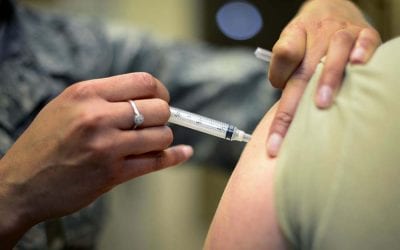OK, you’ve got your tickets to the opening ceremony, track, cycling and other Olympic events. Your airline tickets to Beijing are purchased and hotel reservations in order. You’ve read about the pollution in Beijing, so are you going to pack face masks? That’s a question running through the minds of many travelers going to the Olympics this August.
The World Bank reports China has 20 of the 30 most polluted cites in the world, largely due to China’s high coal use, severe traffic problems, a lack of emission controls on motor vehicles, and diesel fuel containing 130 times the sulfur permitted in the US.
Last week the Chinese Government instituted their “Emergency Beijing Olympic Anti-Pollution Plan.” Factories have been shut down all over Beijing, and other cities as far away as 100 miles. Construction projects have been shut down. As many as 60% of cars have been banned from the roads. All this is to make the Olympics safe from air pollution health risks for athletes. What about the tourists?
According to Tong Zhu, an atmospheric chemist at Peking University, “The air pollutants of most concern for athletes and spectators alike are high levels of ozone and particulate matter. Both pollutants pose known respiratory hazards.”
David Streets, of the Argonne National Laboratory explains, “Air quality in Beijing in the summertime is dictated by meteorology and topography. Typically, temperatures are high, humidity is high, wind speeds are low, and the surrounding hills restrict venting of pollution.” It’s like Los Angeles, but Beijing’s emissions are orders of magnitude more than Los Angeles ever had.
Last December, Robert Goodman (Goodman’s Guides), a well known digital cinematography expert from Philadelphia, was in China. Robert told me he felt the pollution in his lungs from the moment he got off the plane. He said you could taste it, and literally feel the grit in the air.
Tuesday this week, a rain storm cleared Beijing’s air. Wednesday’s pollution index was 44. The Chinese government considers readings below 50 good, and from 51 to 100 moderate. The World Health Organization considers China’s “moderate levels” above what they consider healthy. In the week prior to the storm, the index hovered between 110 and 118, which even by China’s standards is unhealthy, and this was with China’s emergency anti-air pollution plan in effect.
By the way, as reported by the Associated Press, by Wednesday evening, Beijing’s gray air pollution haze was back. Unfortunately, storms don’t improve Beijing’s air quality for long, even with the “emergency plan” in place.
The Chinese government insists the air quality of Beijing has dramatically improved, but Steven Andrews in two articles in the Wall Street Journal, accuses Beijing’s Environmental Protection Bureau of tweaking the way it calculates its air pollution index. Mr. Andrews notes in 2000, for example, Beijing stopped including nitrogen oxides and substituted nitrogen dioxide in its index. Nitrogen dioxide is a smaller contributor to the overall air pollution than total nitrogen oxides, according to Andrews.
While it may be alarmist, researchers in pulmonary medicine and critical care at Northwestern’s Feinberg School of Medicine warn that those who have known cardiovascular disease, high blood pressure, high cholesterol, diabetes, obesity, lung disease, or a current smoking habit, who breath Beijing’s high pollution levels may suffer heart attacks and strokes, and increase the possibility of having blood clots in their legs on the plane home.
So what’s a tourist to do? You’re in one of the most historic cities of the world, with tickets to the greatest sporting spectacle in the world, and you don’t want to act like an “ugly American.” Well if it was me, my health comes first, and like many Olympic athletes, even though it will only help with particulates, I’d still have that face mask handy to keep my lungs clear, and I’d stay indoors if the air pollution index was over 110.
I have a serious future concern. Beijing has some real marvels to see; the Forbidden City, the Mausoleum of Mao Zedong and The Summer Palace to name just three. In October, the “Emergency Plan” will be lifted, and pollution levels will climb back to their normal unhealthy levels. What about your health as a visitor to Beijing then? Moreover, what about the health of those Chinese citizens living and working in Beijing?
After many years working in corporate America as a chemical engineer, executive and eventually CFO of a multinational manufacturer, Ned founded a tech consulting company and later restarted NSL Photography, his photography business. Before entering the corporate world, Ned worked as a Public Health Engineer for the Philadelphia Department of Public Health. As a well known corporate, travel and wildlife photographer, Ned travels the world writing about travel and photography, as well as running photography workshops, seminars and photowalks. Visit Ned’s Photography Blog and Galleries.

